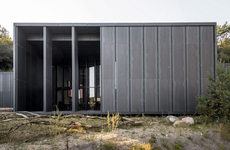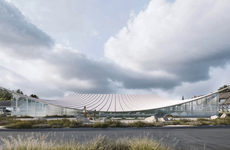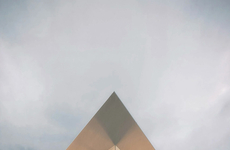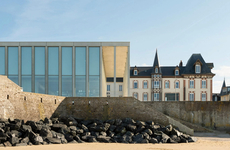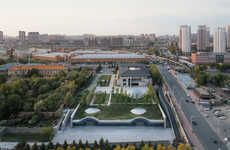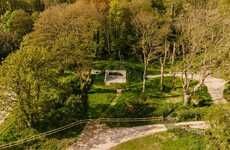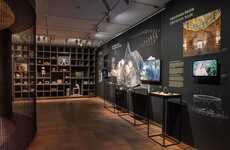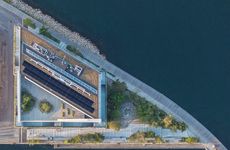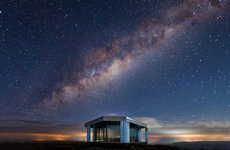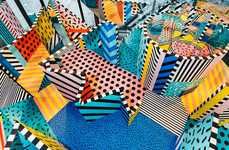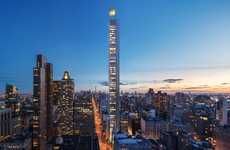
BIG's Tirpizt Bunker is Touted as an Invisible Museum
Joey Haar — July 14, 2017 — Art & Design
References: dezeen
BIG, the famous Danish architecture firm, has built a new set of exhibition spaces at the Tirpitz Bunker in Blavand, Denmark. The "invisible museum," as it's being branded, is built into a hill near a bunker erected by Nazi forces during the second world war, and it will house exhibitions that educated about the history of the war and the Tirpitz Bunker's role in it.
The bunker itself already housed a small museum, but BIG's subterranean addition significantly expands the museum as a whole. The "invisible" portion of the museum doesn't look like it would add much though, as the spaces are hidden underneath a natural sand dune beside the bunker. The only visible features are four linear corridors carved into the dune.
The new addition is designed to contrast against the massive concrete structure of the original bunker, showing a divergence of belief as well as style.
The bunker itself already housed a small museum, but BIG's subterranean addition significantly expands the museum as a whole. The "invisible" portion of the museum doesn't look like it would add much though, as the spaces are hidden underneath a natural sand dune beside the bunker. The only visible features are four linear corridors carved into the dune.
The new addition is designed to contrast against the massive concrete structure of the original bunker, showing a divergence of belief as well as style.
Trend Themes
1. Hidden Museums - The concept of hidden museums like the Tirpitz Bunker museum represents a disruptive trend in creating experiences that go beyond traditional exhibitions.
2. Subterranean Spaces - The trend of integrating subterranean spaces into designs like the Tirpitz Bunker hides architectural structures, like museums, underground to better blend in with their surroundings and attract visitors in new ways.
3. Invisible Buildings - The concept of 'invisible' buildings that blend into their surrounding landscapes, exemplified by the Tirpitz Bunker, represents an opportunity for disruptive innovation in architectural design and can lead to unique and unexpected user experiences.
Industry Implications
1. Museums and Exhibitions - Museums and exhibitions could learn from the design of the Tirpitz Bunker, considering how to create hidden spaces and seamless integration with the natural environment to offer unique and engaging user experiences.
2. Architecture and Design - The trend of creating hidden and invisible buildings, such as the Tirpitz Bunker, suggests that a new approach to architectural design, from integration with the landscape to the use of alternative building materials, could lead to disruptive innovation in the industry.
3. Historical Sites - Historical sites like the Tirpitz Bunker, could leverage the trend of creating hidden, subterranean spaces to develop immersive and interactive experiences that engage visitors in the modern age, leaving behind the traditional notion of a simple museum.
1.8
Score
Popularity
Activity
Freshness


